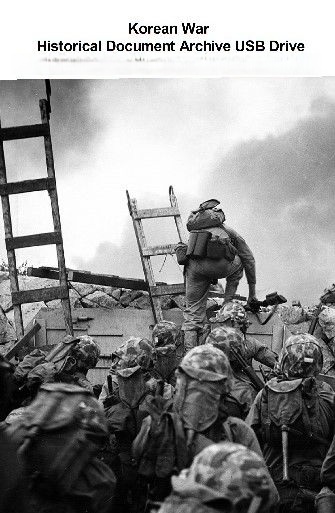
Description
Korean War: A Detailed Timeline and Cast of Characters
Prelude (Pre-June 1950):
- 1945-1950: A “five-year prelude on the Korean Peninsula” exists, setting the stage for the conflict.
- 1948-1953 (Bulk): CIA files related to the Korean War are generated, though some span from 1945 to 2007.
- 1949-1955 (Spanning): Korean War field manuals are produced, with some material declassified as late as 2004.
1950
- June 25, 1950: The Korean War officially begins as the Northern Korean People’s Army invades South Korea along the 38th parallel.
- June 27, 1950: The CIA begins producing daily intelligence products related to the Korean War.
- Early Events (Post-Invasion):General Douglas MacArthur’s third of four occupation divisions is deployed from Japan to Korea.
- A sweeping North Korean attack from the west and continuing frontal assaults press American and South Korean troops (operating under the United Nations flag) into a narrow defensive position.
- This defensive position consolidates around the port of Pusan and the temporary South Korean capital, Taegu.
- National security questions arise, including the status of the island of Formosa.
- The “Stand or Die Order” is issued, encouraging American troops to hold their defensive positions despite the North Korean threat to Pusan (the logistical lifeline to Japan).
- MacArthur visits Formosa for an inspection trip.
- South Korean and U.S. troops withdraw into the Pusan perimeter.
- North Korea launches attacks along the entire line, marking the beginning of the Battle of the Naktong Bulge.
- The Eighth Army defends Taegu.
- The U.S. 7th Division in Japan begins augmentation with South Korean draftees, establishing the KATUSA program.
- Planning for Inchon: Plans for the Inchon amphibious landing are developed.
- September 14, 1950: The “Eagle Forward” newspaper, published by the Public Information Office, 24th Infantry Regiment, Korea, begins publication.
- September 1950 (Implied before Inchon): Final approval for the Inchon amphibious landing is given by the Joint Chiefs of Staff.
- Post-Inchon Approval: The National Security Council approves military operations north of the 38th parallel.
- Pre-Inchon Landing: MacArthur’s invasion force assembles off the shore from Inchon, a port city of South Korea.
- December 31, 1950 (and ongoing): CIA day-to-day reports continue to be produced, with this collection spanning to December 31, 1953.
1951
- October 1, 1951: The “Eagle Forward” newspaper ceases publication.
1952
- June 1952: The period covered by the CIA’s “The Secret War in Korea, June 1950 to June 1952” report concludes.
1953
- 1950-1953: The Korean War is fought between North Korea and South Korea.
- December 31, 1953: CIA day-to-day reports conclude for this collection.
Post-War and Historical Documentation (1955 onwards):
- 1955 (Spanning): Korean War field manuals continue to be relevant up to this year.
- 1964: The CIA’s historical review department produces “The Secret War in Korea, June 1950 to June 1952” report.
- 1972: The Eighth Army Staff Historian’s Office produces “Key Korean War Battles Fought in the Republic of Korea.”
- 1992 (Spanning): United States Military documents, including after-action reports and lessons learned, continue to be generated up to this year, though most are from the early 1950s.
- 2004 (Declassification): Some Korean War field manuals are officially declassified.
- 2007 (Spanning): CIA files related to the Korean War continue to be included up to this year, though the bulk is from 1948-1953.
- 2010 (Declassification): Some CIA day-to-day reports from the Korean War are declassified.
Cast of Characters
- General Douglas MacArthur (1880-1964):
- A prominent American military general with a distinguished career.
- Graduated from West Point in 1903.
- Served in various Army posts, including the Philippines and Panama, and participated in the occupation of Vera Cruz, Mexico.
- Commanded the 42nd (“Rainbow”) Division during World War I, achieving temporary rank of Brigadier General.
- Superintendent of the Military Academy after WWI.
- Appointed Chief of Staff of the Army (1930-1935).
- Returned to the Philippines to create a Filipino army.
- Retired from the U.S. Army in 1937 but was appointed Field Marshall in the Philippine Army.
- Recalled to U.S. service in July 1941 as commander of U.S. Army Forces in the Far East (initially Lieutenant General).
- Responsible for U.S. and Philippine forces during their unsuccessful fight against the Japanese in December 1941, for which he received the Medal of Honor.
- During the Korean War, he commanded UN forces, including the deployment of occupation divisions from Japan.
- His papers cover significant early events of the war, including the Pusan Perimeter, the “Stand or Die Order,” and plans/approval for the Inchon landing.
- Visited Formosa for an inspection trip.
- His invasion force assembled off Inchon.
- Harry S Truman:
- President of the United States during the early events of the Korean War.
- His presidential papers cover key decisions and developments, including the deployment of troops, the Pusan perimeter defense, and national security questions like the status of Formosa.
- American Troops / U.S. Soldiers:
- Core participants in the Korean War, operating under the United Nations flag.
- Pressed into defensive positions around Pusan and Taegu.
- Subject to the “Stand or Die Order.”
- Involved in withdrawing into the Pusan perimeter and defending Taegu.
- The 7th Division in Japan was augmented by South Korean draftees (KATUSA program).
- The “Eagle Forward” newspaper was published for the 24th Infantry Regiment.
- Experienced “combat stress,” which was studied during the war.
- South Korean Troops / South Koreans:
- Fought alongside American troops under the United Nations flag.
- Pressed into defensive positions around Pusan and Taegu.
- Withdrew into the Pusan perimeter.
- South Korean draftees augmented the U.S. 7th Division in the KATUSA program.
- Northern Korean People’s Army:
- The military force of North Korea.
- Initiated the Korean War by invading South Korea along the 38th parallel on June 25, 1950.
- Carried out sweeping attacks from the west and frontal assaults, pushing UN forces into the Pusan perimeter.
- Launched attacks along the entire line at the beginning of the Battle of the Naktong Bulge.
- Joint Chiefs of Staff:
- A body of senior military leaders in the United States.
- Responsible for giving final approval for major military operations, such as the Inchon amphibious landing.
- National Security Council:
- A principal forum used by the President of the United States for consideration of national security and foreign policy matters.
- Approved military operations north of the 38th parallel.
- Public Information Office, 24th Infantry Regiment, Korea:
- Responsible for publishing the “Eagle Forward” newspaper for the troops during the war.
- Operations Research Office of Naval Research, Unit No. 1 Naval Medical Research Institute Office of the Surgeon General US Army:
- The entity that produced the preliminary report “A Study of Combat Stress Korea,” investigating physiological and psychological changes in combat infantrymen.
- CIA’s Historical Review Department:
- Produced the report “The Secret War in Korea, June 1950 to June 1952” in 1964.
- Eighth Army Staff Historian’s Office:
- Produced the report “Key Korean War Battles Fought in the Republic of Korea” in 1972.
Korean War Documents Archive USB Drive
55,501 pages in 12 curated collections covering The Korean War fought between North Korea and South Korea from 1950 to 1953. After a five-year prelude on the Korean Peninsula, the war began on June 25, 1950, along the 38th parallel, when the Northern Korean People’s Army invaded South Korea.
Just plug the USB Pen Card into your laptop, desktop, or tablet to access a significant range of Korea War related documents.
The USB Pen card works with any device with a USB 2.0, 3.0 or 3.1 interface.
The Pen card chip is housed in a metal body that is waterproof, shock-proof, temperature-proof, magnet-proof, and X-ray-proof.
This collection includes as a finding aid, a unified full-text index of all computer recognizable text in all documents in this collection, making it possible to quickly search all computer recognizable text across all pages of all collections in one search.
The collections include:
General Douglas MacArthur Military Records, Histories, FBI Files, Truman Papers
6,931 pages of Military Records, Academic Records, FBI Files, Truman Papers, and Historical Documents related to Douglas MacArthur.
Douglas MacArthur (1880-1964) was born in Arkansas, the son of Army Captain Arthur MacArthur. He graduated from the U.S. Military Academy at West Point in 1903, over the next decade and a half he was assigned to Army posts in the U.S., the Philippines and Panama, served at the War Department and participated in the occupation of Vera Cruz, Mexico. During World War I, MacArthur saw combat in France, commanding the 42nd (“Rainbow”) Division with the temporary rank of Brigadier General. Following the war, he was named Superintendent of the Military Academy and served two tours of duty in the Philippines.
Appointed Chief of Staff of the Army in 1930, with the rank of General, MacArthur remained in that post until 1935. He then went back to the Philippines, charged with creating a Filipino army. General MacArthur retired from the U.S. Army in 1937 and was appointed to the rank of Field Marshall in the Philippine Army. As the threat of war with Japan grew, in July 1941 he was recalled to U.S. service as commander of U.S. Army Forces in the Far East, initially in the rank of Lieutenant General. After Japan began hostilities in December 1941, he was responsible for U.S. and Philippines forces in their unsuccessful fight against the Japanese, later receiving the Medal of Honor in recognition of his efforts.
Harry S Truman Presidential Papers: Korean War
534 pages of documents cover early events of the Korea War including: The deployment of the third of General Douglas MacArthur’s four occupation divisions committed from Japan; A sweeping North Korean attack from the west and continuing frontal assaults press the American and South Korean troops operating under the United Nations flag into a narrow defensive position around the port of Pusan and the temporary South Korean capital, Taegu.
National security questions, including the island of Formosa; The so-called “Stand or Die Order,” encouraging American troops to hold their defensive positions, even as the North Korean appearance on the western flank threatens Pusan, logistical lifeline to Japan; MacArthur’s visit to Formosa for an inspection trip; South Korean and U.S. troops withdraw into the Pusan perimeter; North Korea attacks along the entire line in the beginning of the Battle of the Naktong Bulge; The Eighth Army defends Taegu; The U.S. 7th Division in Japan begins augmentation with South Korean draftees as the KATUSA program is established; Plans for the Inchon landing.
Final approval for the Inchon amphibious landing is given by the Joint Chiefs of Staff; National Security Council approval of military operations north of the 38th parallel; and MacArthur’s invasion force assembling off the shore from Inchon, port city of the South Korea.
Korean War: A Study of Combat Stress Korea
“A Study of Combat Stress Korea,” the 206-page preliminary report from the Operations Research Office of Naval Research, Unit No. 1 Naval Medical Research Institute Office of the Surgeon General US Army. Covering, what are the physiological and psychological changes that occur in combat infantrymen as a result of combat stress?
Korean War: After Action Reports Lessons Learned Documents Battle Assessments
6,031 pages of United States Military documents dating from 1950 to 1992, mostly from the early 1950’s, composed of after actions reports, lesson learned bulletins, and other reports dealing with the assessment of combat activity during the Korean War.
Korean War: CIA Clandestine Services History – The Secret War in Korea, June 1950 to June 1952
The 29 releasable pages of the report “The Secret War in Korea, June 1950 to June 1952,” produced by the CIA’s historical review department in 1964. Only 3 copies were made when first produced, of this mostly still secret report.
Korean War: CIA Day-to-Day Reports
5,500 pages, 891 documents, composed of various intelligence products produced by the CIA on a daily basis covering the Korean War. The documents date from June 27, 1950, to December 31, 1953. This collection contains some material that was not declassified until March 2010. The material includes Daily and Weekly situation reports, Daily Digest of Significant Traffic, and Current Intelligence Bulletins.
Korean War: CIA Files
1,170 pages of CIA files related to the Korean War. The documents date from 1945 to 2007. The bulk of the material dates from 1948 to 1953. The files mostly consist of memorandums, intelligence studies, finished intelligence reports, national intelligence estimates, and special national intelligence estimates.
Korean War: Field Manuals, Technical Manuals and Other Field Doctrine Manuals
28,207 pages of Korean War field manuals. The manuals date from 1949 to 1955. Some of the material was not officially declassified until February of 2004.
Korean War: Foxhole Newspaper: Eagle Forward
698 pages of the Eagle Forward newspaper, published by the Public Information Office, 24th Infantry Regiment, Korea, during the Korean War from September 14th, 1950, to October 1st, 1951.
Korean War: Key Korean War Battles Fought in the Republic of Korea
A 196-page report produced by the Eighth Army Staff Historian’s Office in 1972. Includes text, illustrations, maps and photographs.
Korean War: Official Army History – 18 Volumes
5,274 pages of text covering Korean War history. Eighteen volumes of Korean War history produced by historians of the United States Army. A comprehensive account of U.S. Army activities in the Korean War.
Korean War: United States Army Propaganda Leaflet Program
715 pages of United States Eighth Army propaganda leaflets, documentation, and a history of psychological warfare used during the Korean War.
Related products
-
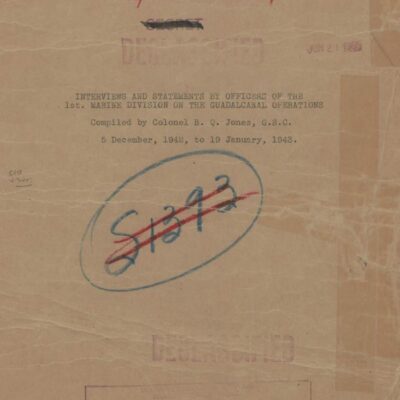
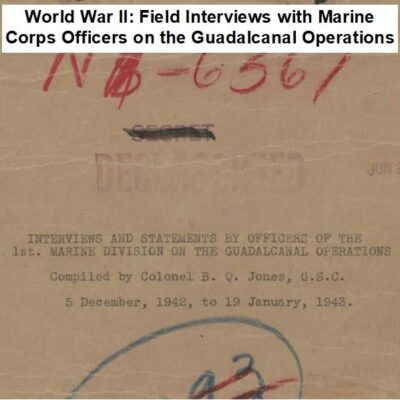
World War II: Marine Corps Officer Interviews on Guadalcanal Operations
$3.94 Add to Cart -
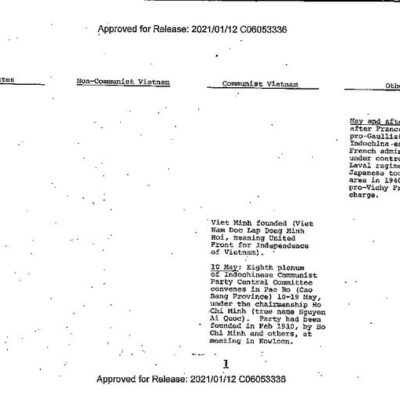
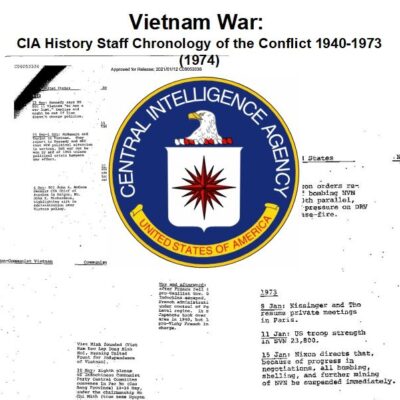
Vietnam War: CIA Chronology of the Conflict, 1940-1973 (1974)
$1.99 Add to Cart -
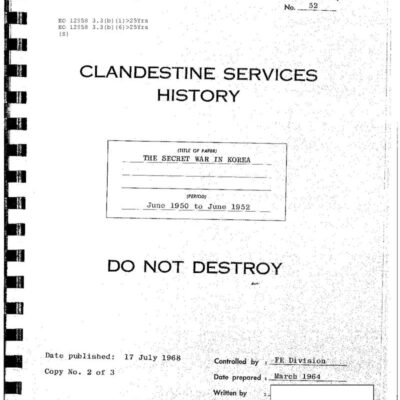
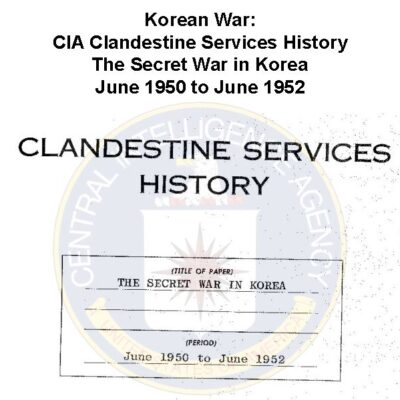
Korean War: CIA Covert Operations History – The Secret Conflict in Korea
$3.94 Add to Cart -
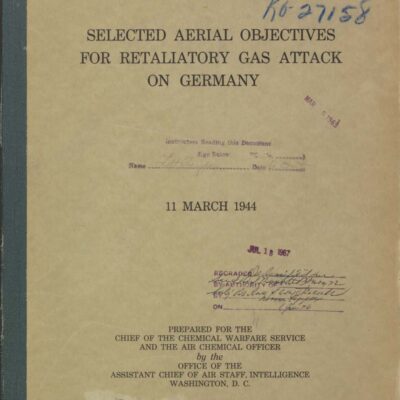
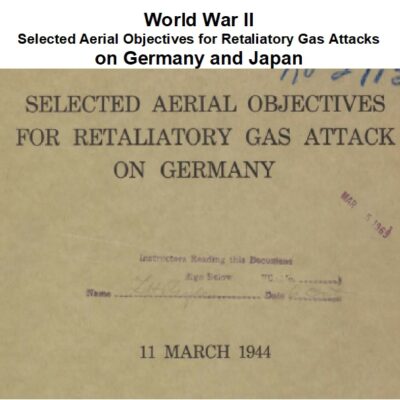
World War II: Targeted Aerial Objectives for Retaliatory Gas Attacks on Germany and Japan
$3.94 Add to Cart